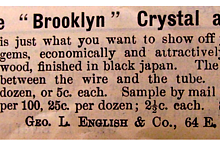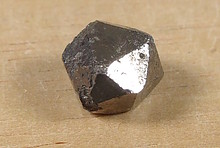Home PageAbout MindatThe Mindat ManualHistory of MindatCopyright StatusWho We AreContact UsAdvertise on Mindat
Donate to MindatCorporate SponsorshipSponsor a PageSponsored PagesMindat AdvertisersAdvertise on Mindat
Learning CenterWhat is a mineral?The most common minerals on earthInformation for EducatorsMindat ArticlesThe ElementsThe Rock H. Currier Digital LibraryGeologic Time
Minerals by PropertiesMinerals by ChemistryAdvanced Locality SearchRandom MineralRandom LocalitySearch by minIDLocalities Near MeSearch ArticlesSearch GlossaryMore Search Options
The Mindat ManualAdd a New PhotoRate PhotosLocality Edit ReportCoordinate Completion ReportAdd Glossary Item
Mining CompaniesStatisticsUsersMineral MuseumsClubs & OrganizationsMineral Shows & EventsThe Mindat DirectoryDevice SettingsThe Mineral Quiz
Photo SearchPhoto GalleriesSearch by ColorNew Photos TodayNew Photos YesterdayMembers' Photo GalleriesPast Photo of the Day GalleryPhotography
╳Discussions
💬 Home🔎 Search📅 LatestGroups
EducationOpen discussion area.Fakes & FraudsOpen discussion area.Field CollectingOpen discussion area.FossilsOpen discussion area.Gems and GemologyOpen discussion area.GeneralOpen discussion area.How to ContributeOpen discussion area.Identity HelpOpen discussion area.Improving Mindat.orgOpen discussion area.LocalitiesOpen discussion area.Lost and Stolen SpecimensOpen discussion area.MarketplaceOpen discussion area.MeteoritesOpen discussion area.Mindat ProductsOpen discussion area.Mineral ExchangesOpen discussion area.Mineral PhotographyOpen discussion area.Mineral ShowsOpen discussion area.Mineralogical ClassificationOpen discussion area.Mineralogy CourseOpen discussion area.MineralsOpen discussion area.Minerals and MuseumsOpen discussion area.PhotosOpen discussion area.Techniques for CollectorsOpen discussion area.The Rock H. Currier Digital LibraryOpen discussion area.UV MineralsOpen discussion area.Recent Images in Discussions
Mineralogical ClassificationChemical composition of lamprophyllite-group minerals and crystal structure of fluorine-rich barytlamprophyllite
22nd Nov 2015 13:23 UTCMarco E. Ciriotti Manager
▪ Akimenko, M.I., Aksenov, S.M., Sorokhtina, N.V., Kogarko, L.N., Kononkova, N.N., Rastsvetaeva, R.K., Rozenberg, K.A. (2015): Variations in the chemical composition of lamprophyllite-group minerals and the crystal structure of fluorine-rich barytolamprophyllite from new peralkaline dyke. Crystallography Reports, 60, 821-830.
Abstract:
The variations in the chemical composition of lamprophyllite-group minerals from a peralkaline dyke of the Mokhnatye Roga area (Kandalaksha region, Kola Peninsula), which are crystallized during the entire period of dyke formation and form several generations, have been investigated. The early generations differ in a steadily high fluorine content, while the later ones exhibit reduced amount of fluorine, impurity elements, and sodium, with a simultaneous increase in the potassium content. The crystal structure of fluorine- rich barytolamprophyllite (potentially a new representative of the lamprophyllite group, differing by the predominance of fluorine in the anion X site) has been analyzed by single crystal X-ray diffraction. This mineral is found to have a monoclinic unit cell with the following parameters: a = 19.5219(8) Å, b = 7.0915(2) Å, c = 5.3925(2) Å, β = 96.628(3)°, and sp. gr. C2/m. The structure is refined to R = 5.73% in the anisotropic approximation of the atomic displacement parameters using 3668I > 2σ(I). The idealized formula (Z = 2) is (Ba,Sr)2[Na(Na,Fe)2(Ti,Mg)F2][Ti2(Si2O7)2O2].

23rd Nov 2015 12:43 UTCLászló Horváth Manager
Would you have a pdf copy of this paper? Thanks.
23rd Nov 2015 14:49 UTCMarco E. Ciriotti Manager




Mindat.org is an outreach project of the Hudson Institute of Mineralogy, a 501(c)(3) not-for-profit organization.
Copyright © mindat.org and the Hudson Institute of Mineralogy 1993-2024, except where stated. Most political location boundaries are © OpenStreetMap contributors. Mindat.org relies on the contributions of thousands of members and supporters. Founded in 2000 by Jolyon Ralph.
Privacy Policy - Terms & Conditions - Contact Us / DMCA issues - Report a bug/vulnerability Current server date and time: April 27, 2024 04:18:34
Copyright © mindat.org and the Hudson Institute of Mineralogy 1993-2024, except where stated. Most political location boundaries are © OpenStreetMap contributors. Mindat.org relies on the contributions of thousands of members and supporters. Founded in 2000 by Jolyon Ralph.
Privacy Policy - Terms & Conditions - Contact Us / DMCA issues - Report a bug/vulnerability Current server date and time: April 27, 2024 04:18:34











